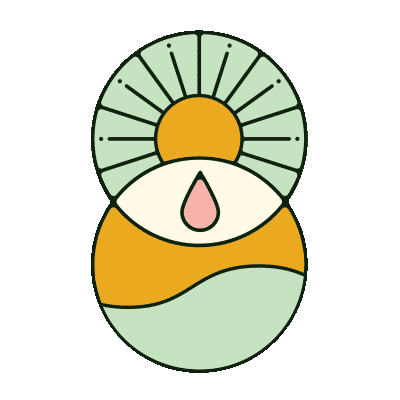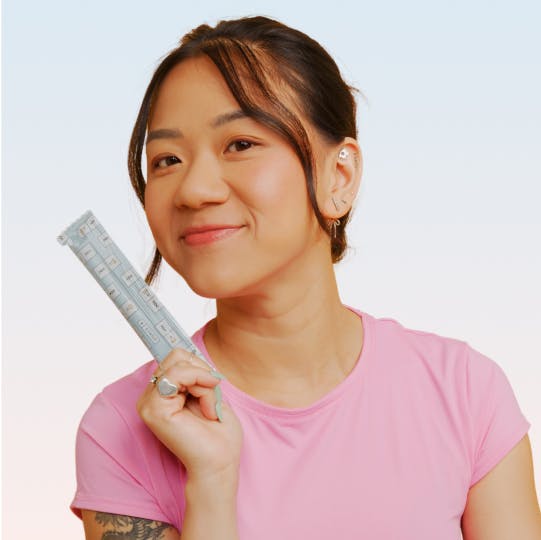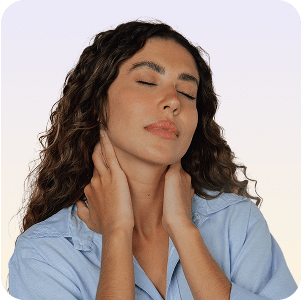Illustrated by Erin Rommel
Normal periods look different for each person.
Slight cycle variations between individuals, or even from cycle to cycle in the same individual, are nothing to worry about.
However, if periods become extremely irregular, or even stop completely, this can be a cause for concern. Specifically, missing your period for more than three months in a row is a cue to dig a bit deeper to find out what’s going on.
There are several reasons that you can miss your period, including stress, stopping or starting a new contraceptive method, or an underlying health issue such as polycystic ovary syndrome (PCOS). But a less commonly discussed cause is a condition called relative energy deficiency in sport, or RED-S.
RED-S happens when there is insufficient calorie intake and excessive energy expenditure—simply, when you're not eating enough food for the amount of exercise you’re doing. Despite its name, RED-S isn’t something that only happens to elite athletes. Anyone physically active can be at risk, particularly if they’re deliberately restricting calories.
RED-S used to be known as “female athlete triad”, a syndrome characterised by 3 elements: a significant caloric deficit, amenorrhea (no period), and low bone mineral density. However, since a caloric deficit can also cause changes to metabolic rate, the immune system, muscle recovery and heart health, as well as changes to the menstrual cycle, the name was changed to RED-S.
Signs of RED-S
Aside from a missing period, there are several other signs that you might be suffering from RED-S.
From a physiological perspective, low muscle mass, struggling to stay warm, and constipation and bloating are all potential indicators that you’re not eating enough. In terms of behavioural signs, a preoccupation with food, trouble sleeping, trying to maintain a strict control of food intake and difficulty with taking rest days are possible symptoms.
Irrational behaviour, a fear of food and weight gain, anxiety, and becoming socially withdrawn are psychological signs. Unsurprisingly, performance can also be impacted. If you’re struggling to recover between exercise sessions and getting injured frequently, RED-S is something to consider.
It’s important to note that RED-S can happen to people in all different sized bodies. It can occur in anyone where there is a significant and ongoing discrepancy between energy intake and energy expenditure. Those with the condition may have experienced some weight loss as a result of being in a caloric deficit, but this is not always the case.
How to fix RED-S
If you think you might have RED-S, it’s important to visit your GP to rule out other conditions, such as PCOS, and obtain a referral to more specialist services. Getting a diagnosis is not always easy because RED-S is still a relatively new condition, and the signs can be subtle.
The good news is that treatment for RED-S is relatively straightforward: increasing food intake and/or decreasing energy expenditure.
Research shows that increasing energy intake by between 300 and 600 calories per day can be enough to get your period back on track, and heal the other symptoms of the condition. Prioritising food intake before and after exercise sessions is particularly helpful, as this prevents short term instances of caloric restriction, which can be stressful for the body.
Your body needs sufficient energy not only to fuel exercise, but also to carry out all its normal biological functions. If there aren't enough calories after accounting for exercise, your body begins shutting down processes that are not essential for survival—like the menstrual cycle.
Upping rest days into your weekly routine can also help, as well as decreasing the intensity of some of your workout sessions.
If you need some support, a registered dietician can help you integrate these changes into your lifestyle in a way that works best for you, while a psychologist may also be helpful if you’re struggling emotionally with making adjustments to your food intake and exercise, such as if you have concerns about weight gain. Research has also indicated that perfectionism is linked with RED-S, which a psychologist can help to untangle.

How to prevent RED-S from coming back
Once you’ve restored your cycle, it’s important not to jump straight back into more intense training and a restrictive diet.
Maintaining sufficient energy balance is crucial for preventing RED-S from happening again. This means that your energy intake needs to be equal to your energy output. If you increase the amount or intensity of the exercise you’re doing, you’ll need to also increase how much food you’re eating.
Another important thing to consider is to keep a balanced diet—this means eating enough protein, carbs and fats. This not only ensures that you can stay healthy, but also optimises your exercise performance.
With so many fad diets around, it can be tempting to restrict calories or macronutrients to try to lose weight, but it’s just not worth risking your health and wellbeing.
Instead, focus on eating and exercising in a way that you enjoy, take enough rest, and your body will settle at a place where it is happiest. People come in all different shapes and sizes, and that should be something that we celebrate.






